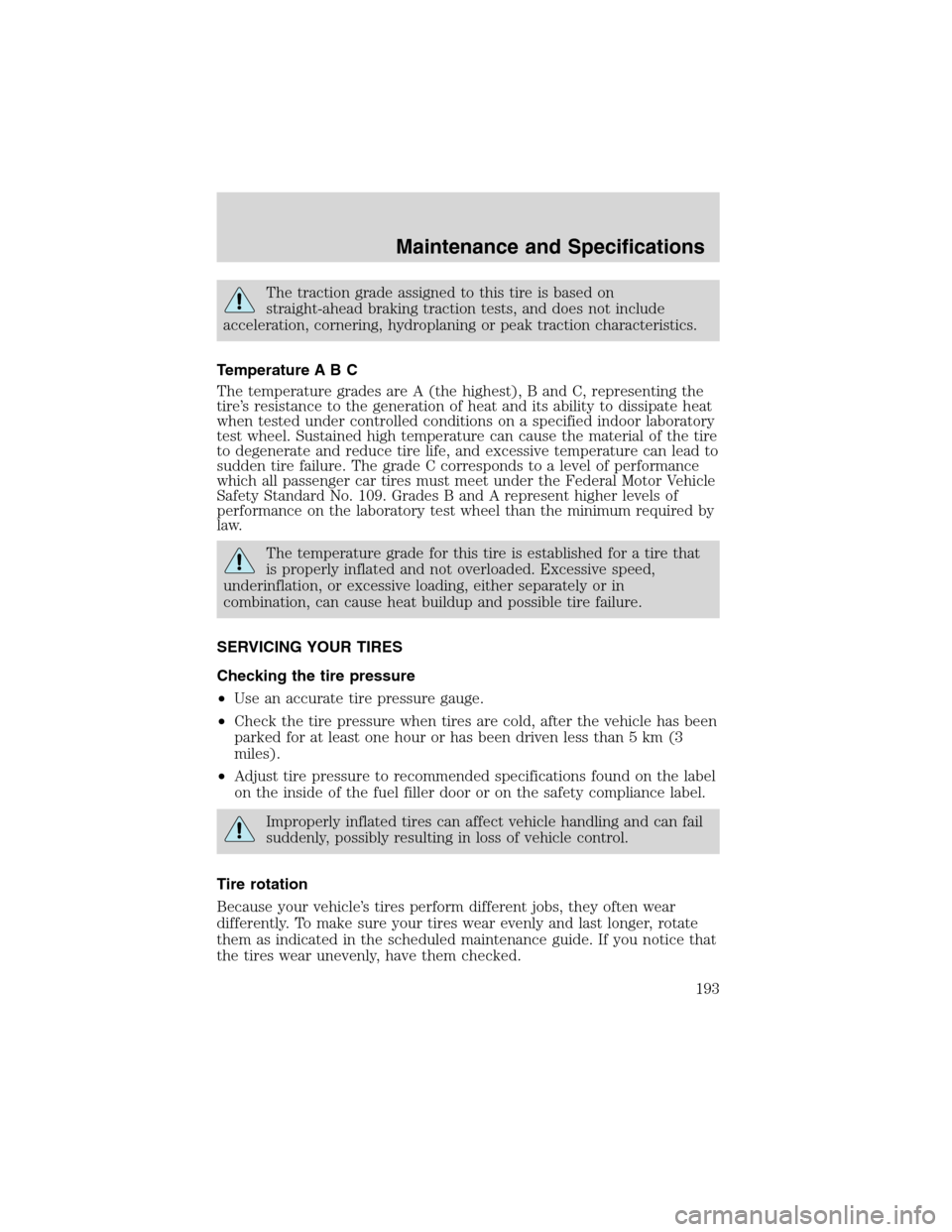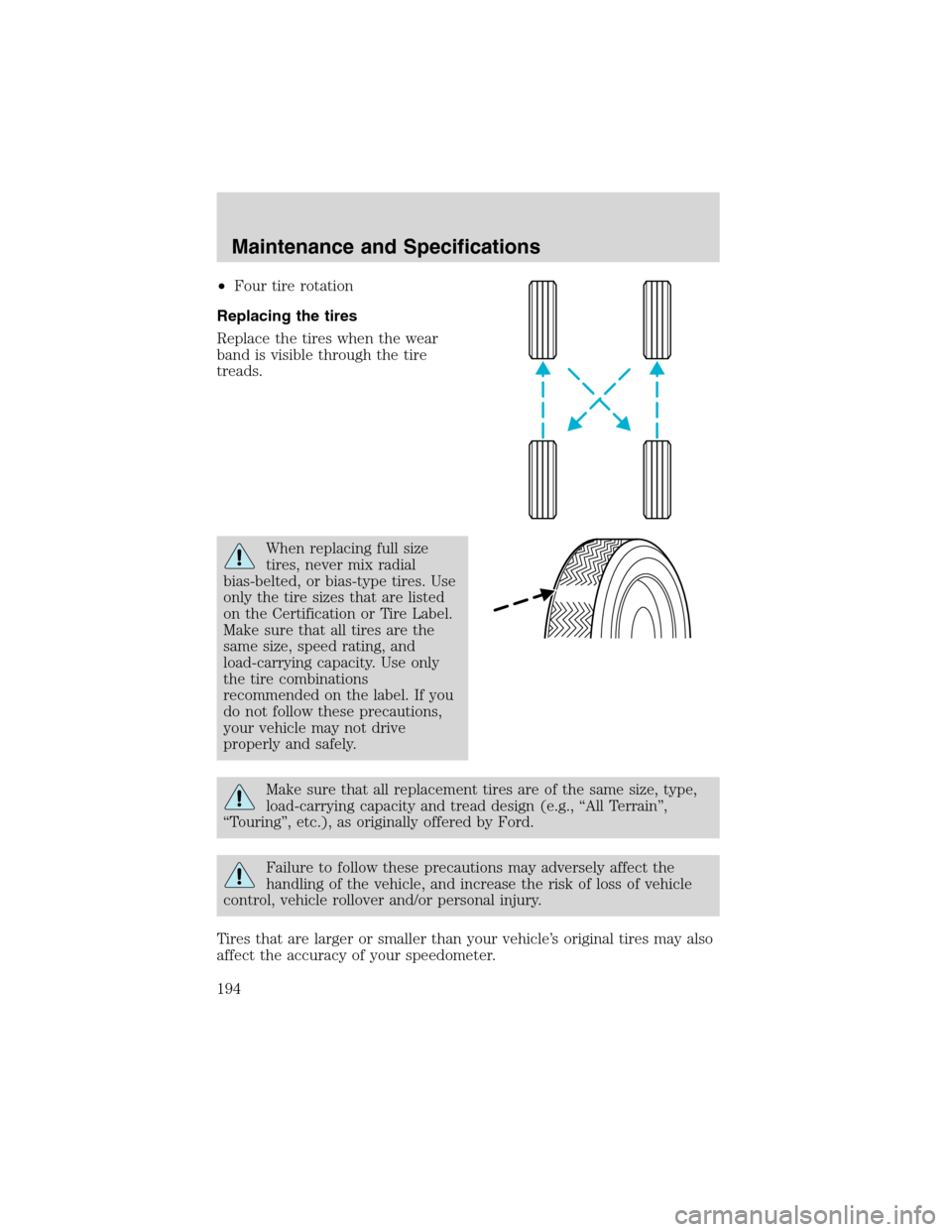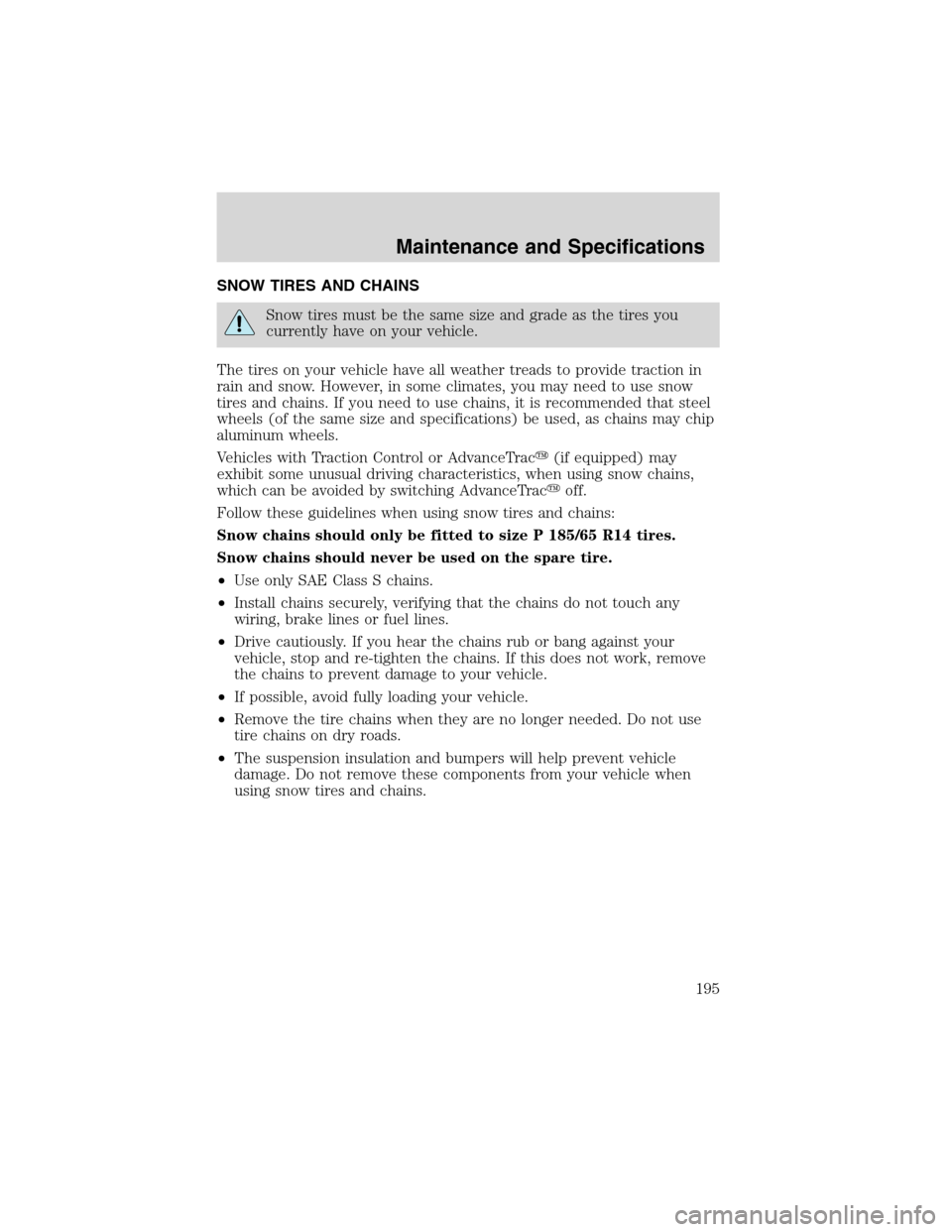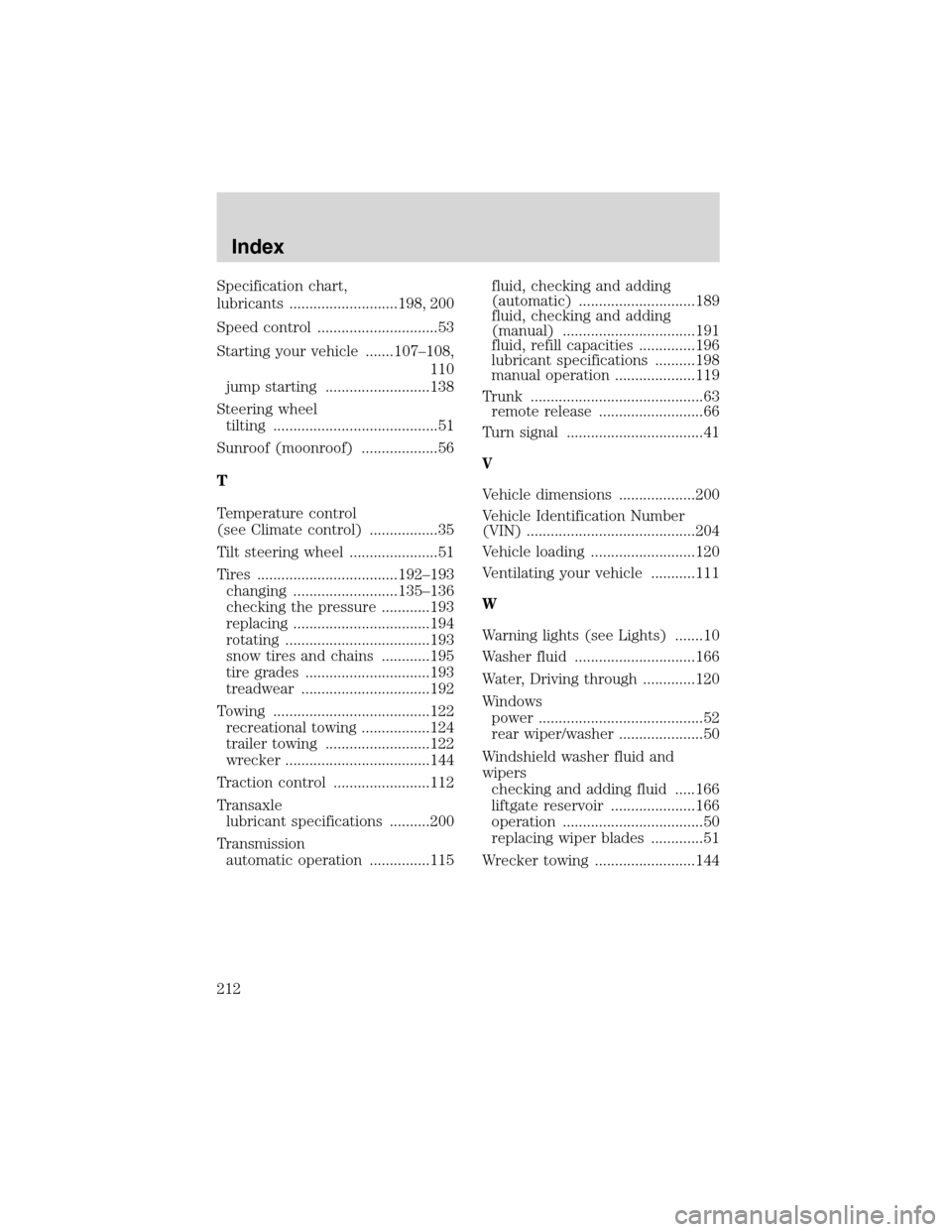Page 193 of 216

The traction grade assigned to this tire is based on
straight-ahead braking traction tests, and does not include
acceleration, cornering, hydroplaning or peak traction characteristics.
Temperature A B C
The temperature grades are A (the highest), B and C, representing the
tire’s resistance to the generation of heat and its ability to dissipate heat
when tested under controlled conditions on a specified indoor laboratory
test wheel. Sustained high temperature can cause the material of the tire
to degenerate and reduce tire life, and excessive temperature can lead to
sudden tire failure. The grade C corresponds to a level of performance
which all passenger car tires must meet under the Federal Motor Vehicle
Safety Standard No. 109. Grades B and A represent higher levels of
performance on the laboratory test wheel than the minimum required by
law.
The temperature grade for this tire is established for a tire that
is properly inflated and not overloaded. Excessive speed,
underinflation, or excessive loading, either separately or in
combination, can cause heat buildup and possible tire failure.
SERVICING YOUR TIRES
Checking the tire pressure
•Use an accurate tire pressure gauge.
•Check the tire pressure when tires are cold, after the vehicle has been
parked for at least one hour or has been driven less than 5 km (3
miles).
•Adjust tire pressure to recommended specifications found on the label
on the inside of the fuel filler door or on the safety compliance label.
Improperly inflated tires can affect vehicle handling and can fail
suddenly, possibly resulting in loss of vehicle control.
Tire rotation
Because your vehicle’s tires perform different jobs, they often wear
differently. To make sure your tires wear evenly and last longer, rotate
them as indicated in the scheduled maintenance guide. If you notice that
the tires wear unevenly, have them checked.
Maintenance and Specifications
193
Page 194 of 216

•Four tire rotation
Replacing the tires
Replace the tires when the wear
band is visible through the tire
treads.
When replacing full size
tires, never mix radial
bias-belted, or bias-type tires. Use
only the tire sizes that are listed
on the Certification or Tire Label.
Make sure that all tires are the
same size, speed rating, and
load-carrying capacity. Use only
the tire combinations
recommended on the label. If you
do not follow these precautions,
your vehicle may not drive
properly and safely.
Make sure that all replacement tires are of the same size, type,
load-carrying capacity and tread design (e.g.,“All Terrain”,
“Touring”, etc.), as originally offered by Ford.
Failure to follow these precautions may adversely affect the
handling of the vehicle, and increase the risk of loss of vehicle
control, vehicle rollover and/or personal injury.
Tires that are larger or smaller than your vehicle’s original tires may also
affect the accuracy of your speedometer.
Maintenance and Specifications
194
Page 195 of 216

SNOW TIRES AND CHAINS
Snow tires must be the same size and grade as the tires you
currently have on your vehicle.
The tires on your vehicle have all weather treads to provide traction in
rain and snow. However, in some climates, you may need to use snow
tires and chains. If you need to use chains, it is recommended that steel
wheels (of the same size and specifications) be used, as chains may chip
aluminum wheels.
Vehicles with Traction Control or AdvanceTrac�(if equipped) may
exhibit some unusual driving characteristics, when using snow chains,
which can be avoided by switching AdvanceTrac�off.
Follow these guidelines when using snow tires and chains:
Snow chains should only be fitted to size P 185/65 R14 tires.
Snow chains should never be used on the spare tire.
•Use only SAE Class S chains.
•Install chains securely, verifying that the chains do not touch any
wiring, brake lines or fuel lines.
•Drive cautiously. If you hear the chains rub or bang against your
vehicle, stop and re-tighten the chains. If this does not work, remove
the chains to prevent damage to your vehicle.
•If possible, avoid fully loading your vehicle.
•Remove the tire chains when they are no longer needed. Do not use
tire chains on dry roads.
•The suspension insulation and bumpers will help prevent vehicle
damage. Do not remove these components from your vehicle when
using snow tires and chains.
Maintenance and Specifications
195
Page 212 of 216

Specification chart,
lubricants ...........................198, 200
Speed control ..............................53
Starting your vehicle .......107–108,
110
jump starting ..........................138
Steering wheel
tilting .........................................51
Sunroof (moonroof) ...................56
T
Temperature control
(see Climate control) .................35
Tilt steering wheel ......................51
Tires ...................................192–193
changing ..........................135–136
checking the pressure ............193
replacing ..................................194
rotating ....................................193
snow tires and chains ............195
tire grades ...............................193
treadwear ................................192
Towing .......................................122
recreational towing .................124
trailer towing ..........................122
wrecker ....................................144
Traction control ........................112
Transaxle
lubricant specifications ..........200
Transmission
automatic operation ...............115fluid, checking and adding
(automatic) .............................189
fluid, checking and adding
(manual) .................................191
fluid, refill capacities ..............196
lubricant specifications ..........198
manual operation ....................119
Trunk ...........................................63
remote release ..........................66
Turn signal ..................................41
V
Vehicle dimensions ...................200
Vehicle Identification Number
(VIN) ..........................................204
Vehicle loading ..........................120
Ventilating your vehicle ...........111
W
Warning lights (see Lights) .......10
Washer fluid ..............................166
Water, Driving through .............120
Windows
power .........................................52
rear wiper/washer .....................50
Windshield washer fluid and
wipers
checking and adding fluid .....166
liftgate reservoir .....................166
operation ...................................50
replacing wiper blades .............51
Wrecker towing .........................144
Index
212